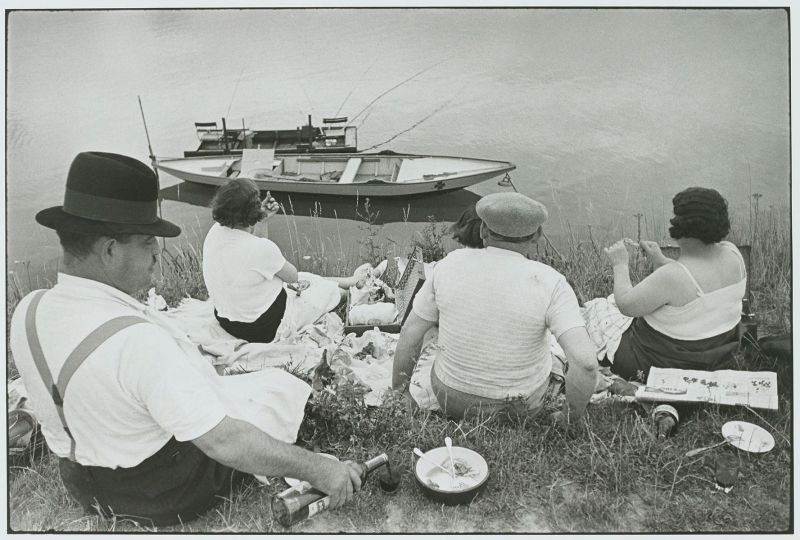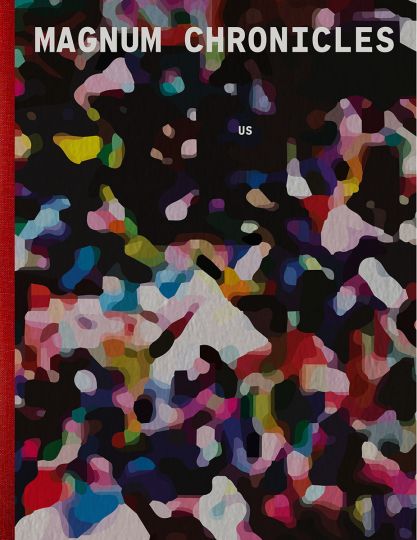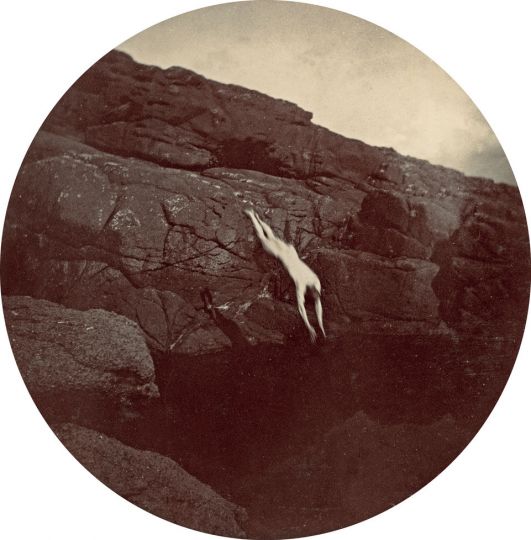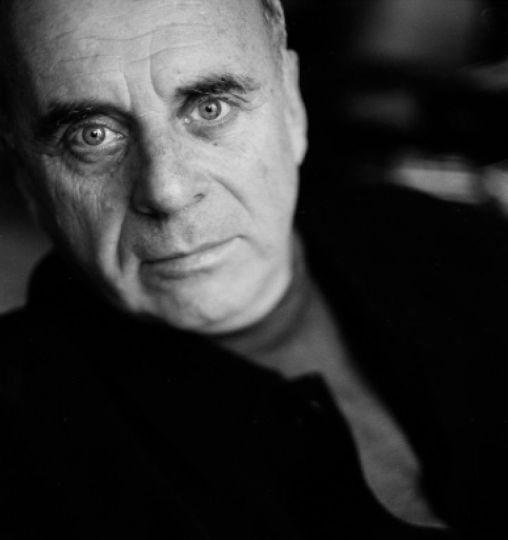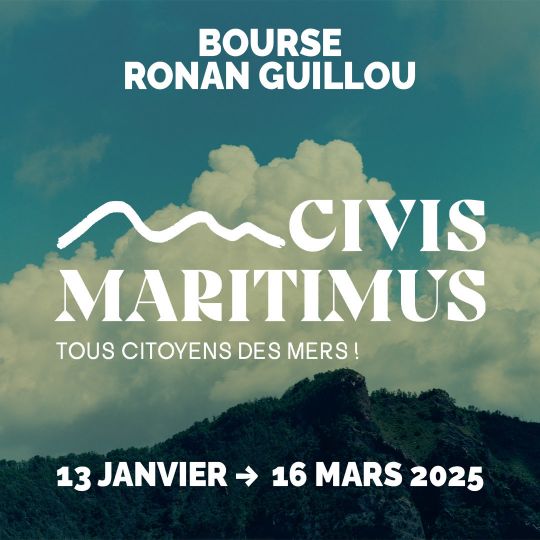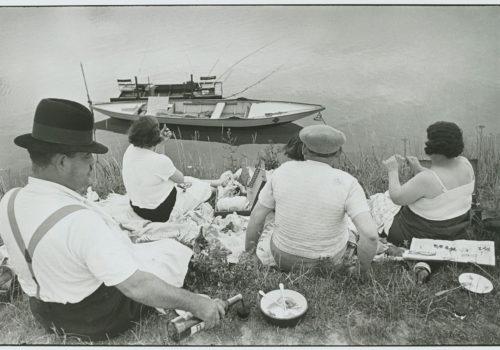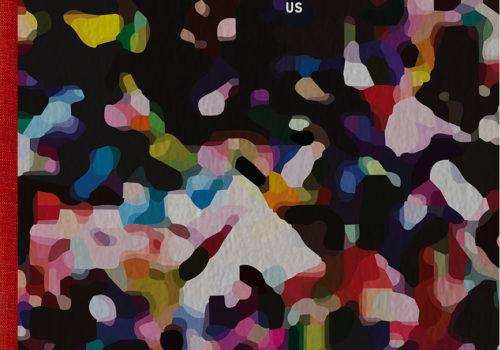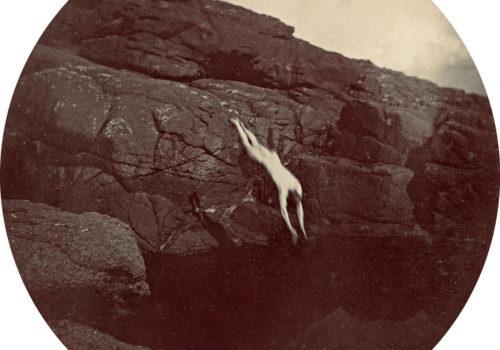Aisha Zeijpveld 1983 (images 1-3)
Aisha Zeijpveld has a unique way of photographing. At first glance you may mistake her approach for Photoshop, but in fact she uses a hands-on method: “I use scissors, cardboard or whatever else I have lying around my studio, a lot of improvisation is involved , an essential ingredient in my creative process.” To avoid replicating previous ideas, she continues to push her boundaries which she manages to do this without sacrificing her recognizable trademark style.
The process may seem tedious to some, but Zeijpveld definitely gets a kick out of it. “I love these subtle distortions, the dust and scratches on the surface of each printed photograph, it adds a tactile and artistic touch. Experimenting with such techniques has opened up a whole new arsenal of opportunities to create images.”
Over the years she has taken many portraits of famous people in the Netherlands. Faced with unique, intimidating personages, how did she approach her subject? “I study their life to get a feel of their character so I can relate to them. This gives me the input to shape the images specifically to measure. At the end of the day I consider most of my work portraits of ideas rather than the represented people.”
“Each photoshoot is different. It’s all about comfort and feeling at ease”, she tells us, “I try to capture a moment in which the subject seems unaware of the camera. This means finding a mutual trust, which can be a difficult task, especially when experimenting with new techniques. But that is why I always prepare as much as possible so that I can direct the team with a clear vision. Then I also feel more relaxed.”
The essence of photography for Zeijpveld can be summed up as: “Have confidence in your peculiar self, and establish your own signature. Always let the human touch prevail over using the newest hardware and software. To me, the thing that distinguishes us from other specimens can be caught in one phrase: see with the eyes and watch with your brain.”
Annemarie van Buuren 1961 (images 4-6)
Until now, our relationship with the world surrounding us was one of exploitation. Recently there are hopeful signs that our liaison with nature is changing. This new attitude is based on connection and cooperation between the species and is referred to as the Symbiocene. This attitude is inspiring philosophers, artists, scientists and linguists. It also affects our vocabulary, with neologisms as solastalgia: feeling not at home in a disrupted environment, or: noctalagia: a longing for the darkness of the night sky.
In my photography I like to contribute to this new approach. I try to capture our poetic and mysterious connection with the non-human world: animals, plants, mountains, moon and stars. I am also seeking collaborations with nature by using analogue techniques in which “nature draws itself” such as photograms and lunagrams.
My picture Leaf is an example of a photogram, an old-fashioned technique in which a plant is placed on photographic paper and exposed to sunlight for about 1 second. After development a picture of the plant emerges. The plant has “drawn” itself, without the use of a camera. Pictures Lunagram I and II are examples of lunagrams. A negative picture of the moon is placed on photographic paper and at night exposed in the light of the moon. I like to think of these pictures as collaborations between the moon and myself. During this project I gave in to my noctalagia, as I live close to the ‘dark sky park’ Lauwersmeer.
My care for the environment is also reflected in the use of natural printing papers such as bamboo paper, and non-toxic developers.
I graduated from the Academy of Photography in the Netherlands as an autonomous-illustrative photographer with digital work, but soon after that lost my heart to old-school analogue photography. I often work with a wooden plate-camera from 1890. I like to transgress the boundaries of photography and mix photos with drawings in East-Indian Ink, or to give analogue images a digital twist, merging past and present, day and night, human and non-human. I took part in national and international exhibitions and won prizes and honorable mentions with Paris Photo, Tokyo International Photography Award, and Analogue Sparks (Gold Fine Art Experimental). Together with the poet Aly Freije I published De Donkere Kamer/The Dark Room, a book with poems and photographs with the dry-plate camera. This book was selected as one of the best books of 2023 by Literair Nederland. “
Denis Félix 1960 (images 7-9)
After 5 years studying medicine in Paris, I decided to pursue my dream of becoming a photographer.
At 23 I became a photographer for the fashion-advertising business, while perfecting my artistic research.
1993 marks the beginning of my personal work: I travelled with a large format camera and polaroid 55 in Mali, West Africa, where I lived in villages with the Senoufo and Bozo people.
Taking portraits became my way to connect with humans – I photograph in a very immersive way. Through the viewfinder of the camera, the image is reversed, which offers me a shortcut to my imagination.
From Guinea to South Africa, from Ireland to China, from Brazil to Guatemala I was always seeking for a singular moment of grace in a single shot, a single image. The book “The thread of life” (published by Somogy Editions), traces the path of this project from 1993 to 2006.
The heart of my work is photographing with analogue film and a large format camera, and experimenting with chemistries in my photographic lab.
I often refer to historical processes, dry plates, mixing platinum-palladium prints and watercolour.
The series “Paradisio” is a tribute to the mystery and beauty of the flying natural world, sensitive and fragile. This project uses large format photography mixing dry plates with negative instant film, to reflect and enhance this Incredibly coloured, enchanted joyful and poetic dreamlike world of biodiversity.
Exhibits internationally since 1994, in France (Paris, Aix-en-Provence, Marseille…) but also far beyond: Cape Town, New Delhi…
https://www.denisfelix.com/ +33 6 1161 3838
Nina Hauben (images 10-12)
“In the end, all that’s left are the memories we hold. It’s a fear that these memories, like wisps of smoke, will dissipate with time, leaving me with a void that cannot be filled . I wish I could have collected more of these memories. Since I can’t hear your voice, your footsteps, or feel your presence, I have to pretend, so that’s what I do. “
Nina Hauben is an Amsterdam based photographer, graduated at Amsterdam Fashion Institute in International Fashion Management. Working in the fields of fashion and commercial photography.”
Olga Karlovac (images 13-15)
Olga Karlovac is a self-taught, abstract and street photographer, born in Dubrovnik, Croatia. She is best known for her unique and expressive style of photography and her trilogy of self-published photobooks.
Olga uses her camera to capture fleeting moments and emotions. Working exclusively in black and white, predominantly after dark and in rainy conditions, her abstracted images blur the lines between figuration and visual poetry. Her dreamlike scenes lead us down winding streets and invite us to linger and lose track of time, to recognise the familiar within the barely there.
Olga aptly describes her unique vision in the introduction to her book Escape:
“in the blink of an eye in the moment between day and night, somewhere at the edge of darkness and light walking down an empty road below the mountain of memories while strong winds from the north carve your marks all over my skin I feel your breath and I imagine… “
Her photography has been featured in many photography magazines, such as black+white photography magazine, frankfurter allgemeine zeitung, der standard, inspired eye, etc.. Olga has exhibited in group and solo exhibitions around the world, mostly in London, where she exhibited in Saatchi, POSK, ECAD, Project Space and other galleries, as well as in the rest of UK, the USA in New York, in Belgium, Italy, Iran, Albania, Ireland, France, The Netherlands and others.
Following the success of her trilogy, she is currently working on her next book. Having been interviewed about her unique style and experience of self-publishing, she also offers online tutorials to share her experience of shooting, producing and marketing photobooks.
Paulien Dubelaar 1974 (images 16-18)
Paulien deals with existential questions, such as: the meaning of life and death, how can we live a significant existence, who are we as humans? Where answers are not readily available, she tries to explore with her images: in greatness and insignificance, in vulnerability and transience, in stillness and motion, in darkness and in light. She feels connected to the ideas of existentialist philosophers and uses them as inspiration in her photographic oeuvre
In today’s world, happiness seems to be the ultimate goal. We pursue it, and we feel compelled to keep advertising our happiness on the public media. But is this pursuit not a mistake? Does this chase not often lead, ironically, to an unhappy life?
Her images show a different reality: dark, alienating, and alone. We seek our way through chaos and darkness, and try to add structure and find support in what surrounds us. Bright spots provide direction, but they do not lift the isolation of the searching human. We are surrounded by the greatness of nature and we stand in the dimmed light of ever-continuing time. Vulnerability and decay are certainties, yet, everyone has to learn how to love the inevitable fate.
In this ongoing project Amor Fati (love of fate), Paulien got inspired by a quote from Friedrich Nietzsche from 1887:
My definition for greatness in humans is amor fati:
That you don’t demand from anything to be different,
not in the future, not in the past, not in all eternity.
Not merely just tolerating the inevitable,
even less conceal it, but embrace it.
In her images Paulien shows moments that are detached from their past and their future. She wants to seduce the viewer to embrace every moment anew, to feel love for what is, and to even cherish fate.
Paulien uses different techniques to edit her images, such as etching, zokin gake, and cyanotype. By using these techniques, she adds an extra dimension to bring the images to life. The photographs are evocative, with a mixture of dreamlike content and pictorial aesthetics. There’s an intersection of romance, gothic darkness and fantasy.
Besides her creative work, Paulien is active in education, the last 12 years in management functions.
Pieter Bas Bouwman 1990 (images 19-21)
“Pieter Bas Bouwman has carved a unique path in the world of photography by skilfully harnessing the dynamic energies of chaos and control to craft narratives that captivate the senses. With an unwavering focus on the intricate interplay between these elemental forces, Pieter Bas lens becomes a revealing tool, laying bare the profound impact of human existence on our cherished natural heritage.
Breaking free from the confines of convention, Pieter Bas artistic vision knows no bounds. He employs a diverse array of methods, ranging from experimental techniques to meticulous compositions, breathing life into his images. Each photograph, under his adept eye, transforms into a canvas where the delicate dance of disorder and order unfolds in a mesmerizing symphony.
His work transcends the constraints of traditional photography, offering a fresh and insightful perspective on the complex relationship between humanity and nature. Through his lens, spectators are invited to bear witness to the dynamic tension, discovering beauty in the harmonious clash between chaos and control. His images serve as a visual expedition, provoking contemplation on our shared responsibility for the environment and compelling us to become stewards of our collective legacy.
In the hands of Pieter Bas Bouwman, photography transcends its usual boundaries to become a powerful medium. His art captures the very essence of human impact on the natural world, seamlessly blending chaos and control into a compelling fusion that resonates with depth and significance.”
Uffe Raupach 1971 (images 22-24)
Uffe Raupach’s work centres on universal connectedness. It is an inner personal and an universal odyssey of our fleeting existence in relation to the profound emotional experiences of love, time and nature toward inner peace. Rather than wanting to document, his photographs point to transcendenting reflections of the soul and of the merger of all life
“Since my early childhood I wander often on the wild and beautiful Danish west coast. My family has ties there that go back 350 years, and whenever I stay there I experience a deep inner peace and sense of belonging.
But there is also a longing towards the endless horizons of the sea. The elements reign, and nature becomes vulnerable. Life is strongly defined by the cycles and rhythm of the seasons, the movement of the tides, the wind, the sun and the moon.
For 6 years I travelled the world, and I felt the same raw force from nature and gentle inner energy. People seem to resonate to the surrounding environment, it becomes a bedrock where they feel they belong and are fulfilled. Isn’t it this that we seek in love and life?
How come that habitats define us as persons ? Inspired by Buddhism and quantum physics, I realised that in the immutable seeming nature, nothing is ultimately definite. How will this realisation truly affect us humans, and how will this understanding influence how we interact with nature.”
Uffe Raupach is a Danish art director and art photographer, living in Copenhagen.
Xènia Fuentes 1981 (images 25-27)
“For years I investigated the idea of duality. What happens when the same person is in front and behind the camera? The one that is exposed and observed at the same time, the photographer and the model. Sometimes I get the impression that with each shot I am trying to build a dialogue with the person on the other side of the camera, or that I am revealing her essence.
Starting from an intimate image, and using self-portrait and nude as genres, I explore my closest environment: home. From day to day, with the passing of seasons I capture the subtle changes of the atmosphere. I use my body and my femininity to play with light, movement, shadows, colours… The final result is a particular universe, that entices the viewer with an image that contains a mystery and an emotion. “
Venue
Keilepand,
Keilestraat 9F,
3029BP Rotterdam
www.haute-photographie.com
Opening hours:
- Thursday February 1: Preview 3:00 PM – 5:00 PM + VIP opening 7:00 PM – 11:00 PM (by invitation only)
- Friday, February 2: 12:00 PM – 7:00 PM
- Saturday, February 3: 10:00 AM – 7:00 PM
- Sunday, February 4: 10:00 AM – 5:00 PM
John Devos
Correspondant L’Œil de la Photographie/The Eye of Photography
john.devos01(a)gmail.com


